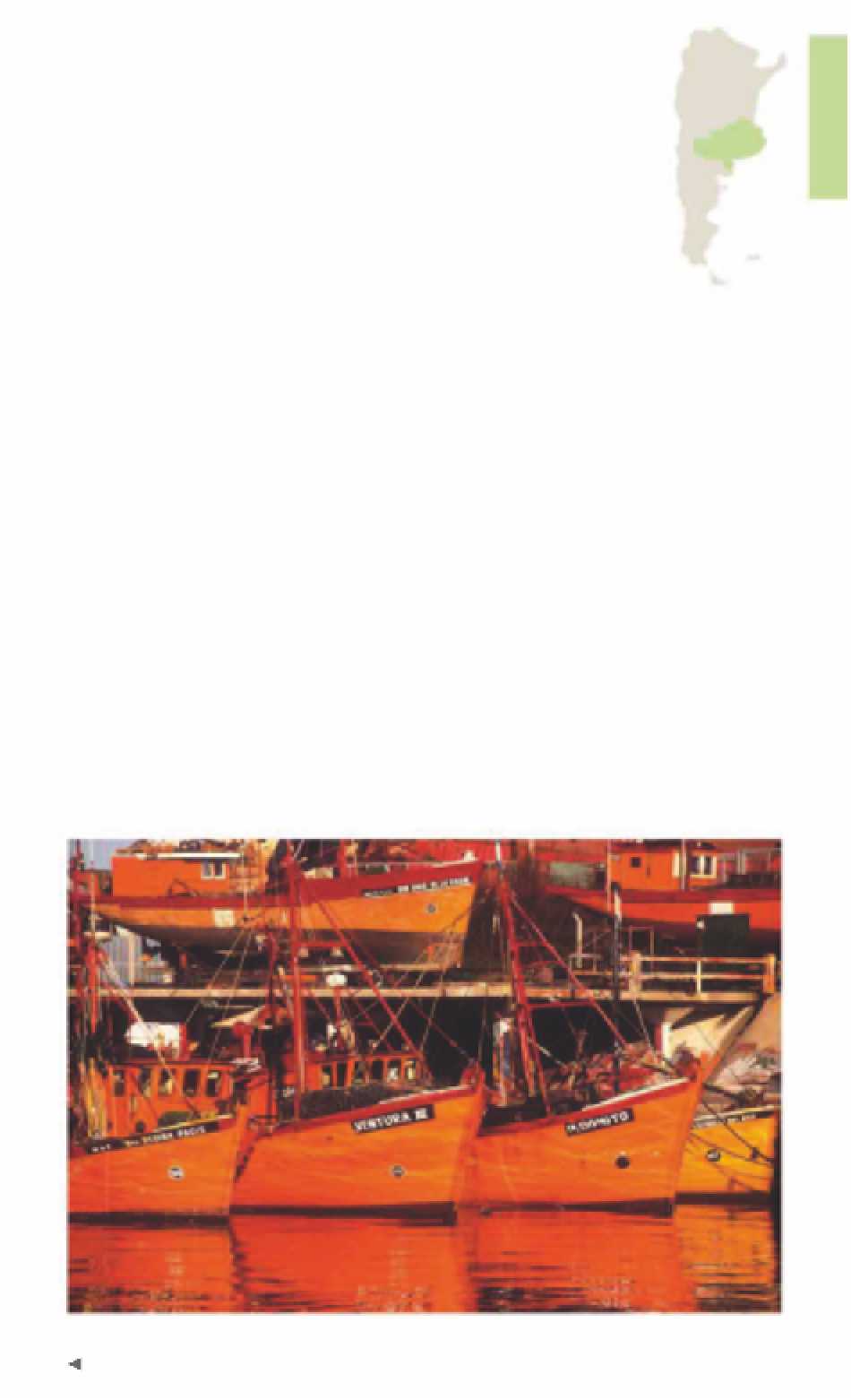Travel Reference
In-Depth Information
THE PAMPAS
Solitary
ombú
trees, stunning birdlife, and grand estancias are the
most visible sights on the rolling grasslands that extend from the
Atlantic coast and Río de la Plata in all directions. Settled in the
18th century, the Pampas is the economic heartland of this cattle-
raising, farming nation, and the iconic gaucho who oversees this
domain remains a heroic archetype for many Argentinians.
The original inhabitants of the Pampas
were the Querandí, who lived a
semi-sedentary lifestyle on the fertile
plains. During the 18th century, the
Spanish colonial authorities established
a frontier across the region. As the
natives were forced out, ranches were
established and, by the mid-19th century,
wealthy families had divided up most of
the land. In the chain of towns around
the capital - San Miguel del Monte,
Mercedes, and San Antonio de Areco -
are some of the most famous estancias
in the country. The introduction of new
cattle breeds and, later, refrigeration and
fencing led to economic booms in the
late 19th century and in the 1930s and
40s. The fencing did, however, spell an
end for the free-roaming habits of
the gauchos. In the 20th century, the
Atlantic coast became a place of rest
and recreation for wealthy porteños,
leading to the rapid growth of coastal
towns. These beach resorts, now popular
with locals and visitors alike, generate
a large amount of revenue for the
tourism sector, although the Pampas
is the most productive in terms of
agriculture and industry. In summer,
back packers and adven turous souls
head for the ancient mountain ranges
to the south of the province, whose
slopes provide an opportunity for many
outdoor activities such as mountain
biking, rock climbing, and trekking. An
array of gaucho activities await visitors
who opt to stay at one of the many
working estancias scattered in the
Pampas, while exclusive tourist ranches
offer luxury accommodation
.
A row of ishing boats docked at the Mar del Plata port
Female gaucho tending to horses at the Estancia El Ombu de Areco
































